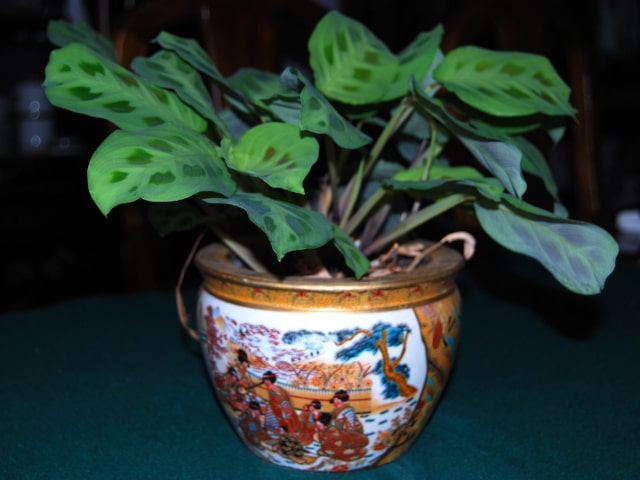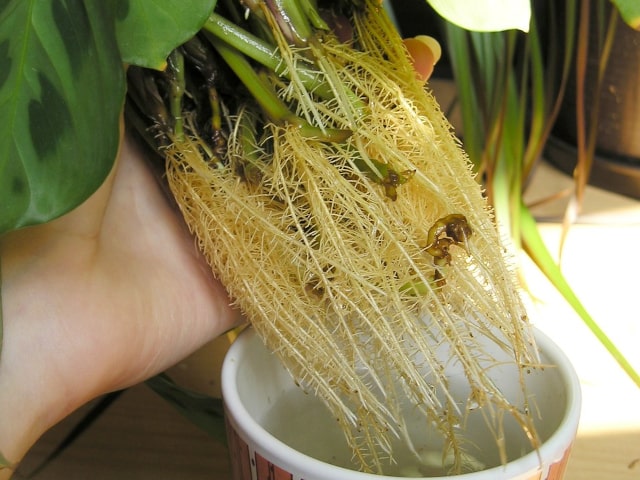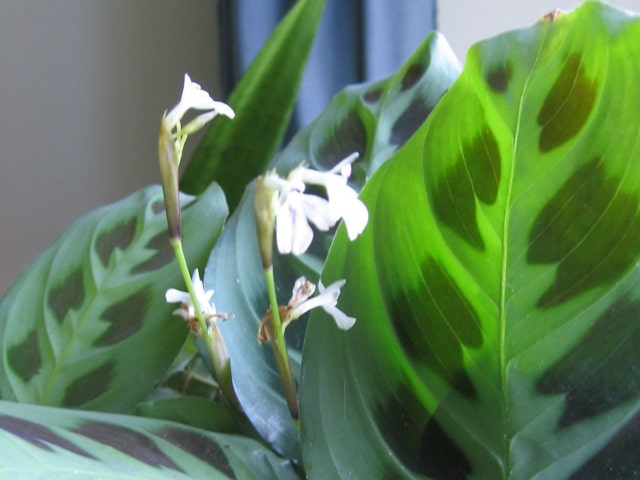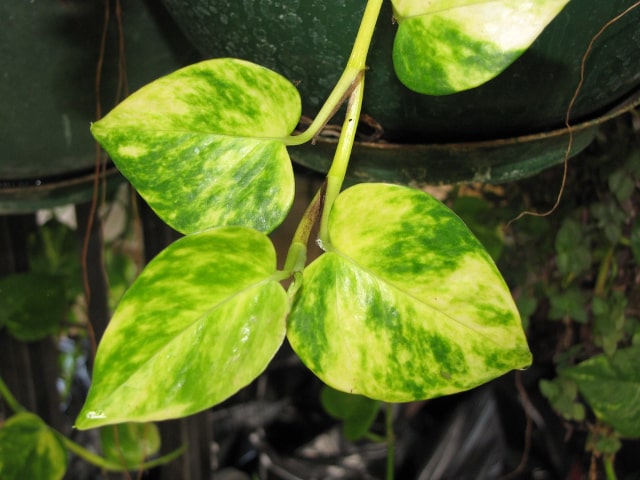
Prayer plants are beautiful houseplant from the Maranta family. These plants are known for their lush foliage and the foliage is the main reason they are so popular. Prayer plant is somewhat demanding so you need to provide it with adequate growing conditions. This effort will pay off since these plants can add so much beauty to your home.
Basic Plant Facts
Prayer plant belongs to the Maranta family. Scientific name of the plant is Maranta leuconeura. This plant originates from South America so it's used to warm and humid climate. It's one important thing to keep in mind, since Prayer plants require a lot of humidity to thrive.
This plant can grow about 2 feet in height. It is not poisonous to pets (cats and dogs) so you can keep it in your home without a fear that it might harm your pets.
This plant grows in tropical climates such as South America or Thailand. There are many different varieties belonging to the same family. This plant is very similar to Calathea varieties (since Calathea plants belong to the Maranta family). They are known for their large, gorgeous leaves, which is the main reason people choose to grow them in their homes.
There are many varieties of the Prayer plant. The most common ones are Roseolineata and Sanderiana. These plants are famous for the distinctive stripes and markings on the leaves. The leaves have unique patterns and strong colors so they are very effective indoors.
This plant is known for gorgeous leaves but the flowers are typically unimpressive. Also, it blooms very rarely indoors so chances are that it will not flower inside your home.
The plant grows in an upright position and the active growth happens between March and October. To promote the growth of your plant, make sure to keep it in moist soil. Keep in mind that while Prayer plants can grow bigger in nature, they will typically grow not more than 2 feet in height indoors. They will generally not be more than 2 feet wide when grown inside.
Beautiful Foliage
Prayer plants are typically grown for their gorgeous foliage. The leaves are green with pink stripes and a glossy appearance. The leaves have patterns (veins) that are feathered. In some cases, they have a bit of a pink hue to it. The undersides of the leaves are reddish and purple. The pink stripes on the leaves typically turn white as the Prayer plant ages.
The leaves grow at the end of the long stems. The stems and leaves require the right location and proper care to stay healthy. Keep this in mind if you wish to grow Prayer plant in your home.
Care Instructions
Most people choose to grow their Prayer plants indoors. However, keep in mind that you may grow your plant outdoors, as long as you don't live in a very cold area. In fact, this plant will look very attractive on a patio, porch or decking. You can also plant it in beds and borders. It will sure be very striking among the other plants because of the lush foliage.
To make your Prayer plant thrive you need to provide it with a certain standard of care. This is a demanding plant so it's not ideal for beginner gardeners or those who prefer a more laid-back approach. However, you will appreciate and effort given to this plant because a healthy, strong Prayer plant will truly make a difference in your home.
Here are the things you need to provide to your Prayer plant:
- Soil. These plants thrive in a peat-based potting mix. It is best to use soil that is 2 parts peat and 1 part perlite.
- Light. This plant needs bright conditions but without direct sunlight. It's best to find a spot in your home that receives plenty of light but without direct exposure to sunlight.
- Temperature. The ideal temperature for a Prayer plant is between 65 degrees F and 75 degrees F (18 to 23 degrees Celsius). Make sure to never keep your Prayer plant in a room that is colder than 60 degrees F (15 degrees Celsius). Also, you need to protect your plant from cold drafts or sudden temperature changes.
- Humidity. Humidity is very important for Prayer plants. You need to provide your plant with plenty of moisture. The plant will thrive if the air is not too dry. Use pebble trays to improve the level or humidity or invest in a humidifier. You may also try misting the leaves, but this is usually not enough to raise humidity levels that your Prayer plant requires. That being said, it is helpful to mist the leaves once per day during the summer.
- Watering. These plants require plenty of water during the growing season. You may cut the watering down during the winter but keep the plant properly watered. You may allow for the top level of soil to dry out during winter, which is something you should not let happen during the growing season.
- Fertilizing. Prayer plants need a diluted, balanced fertilizer every two weeks during the growing season. Fertilize from April to October and stop fertilizing outside of these months.
Repotting and Propagation
You will need to repot your Prayer plant every 2 years. It is best to do this during spring. You should replace the pot for a larger one only if the plant has outgrown its present container. If you want to propagate your Prayer plant, you should do this at the same time as repotting.
It is best to propagate Prayer plants by division. Simply divide clumps of leaf stalks and leaves with roots. Do this during repotting. Simply plant segments in individual pots. Cover the new plants and their pots with polythene to encourage the new growth and to provide them with all the warmth and humidity they need. Once the new growth appears you can remove the covering.
Common Problems
There are some common problems you may encounter with Prayer plants. Most of the problems are caused by the lack of humidity, so this is usually the first thing you need to fix. These plants will suffer if there is not enough humidity so keep this in mind if you want to grow them in your home.
Also, another common problem is the cold. While Prayer plants can grow at various temperatures, once the temperatures become too cold the plant will suffer.
Another potential problems are the pests. There are numerous pests that are known to attack these plants, such as mites, caterpillars and mealybugs. Make sure to have some pest control ready and observe your plant regularly to notice any potential pest problem. You should always make sure to treat any pest infestation as soon as it appears.
Photo credit: Jackie




3 Comments
What makes the end of the leaves turn brown. Too much water or not enough?
I have a beautiful Prayer Plant that I do nothing more than water occasionally and it blooms continuously in my house. So I don't see any difficulties growing these. Would post a pic if I could. It is at least 2 ft long and prays every night.
I have a very large Hoya plant that needs to be transplanted. The runners are so long and was wondering if it would hurt to shorten them. The plant is about 8 years old. Thank you